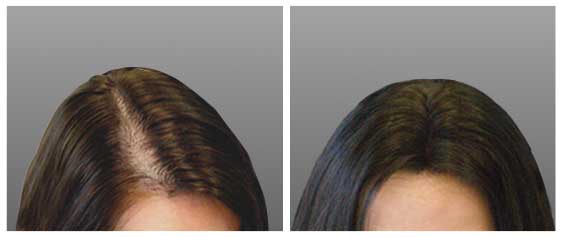FEMALE AESTHETIC HAIRLINE RESTORATION

It is estimated that as high as one-third of women experience hair loss (alopecia) at some time in their lives. Hair loss often has a greater impact on women than on men, because it's less socially acceptable for them. Hair transplantation for hairline reconstruction is gaining popularity among women with hair thinning, high hairlines and those who have undergone cosmetic facial procedures which can alter the hairline, such as face and forehead lifts.
In women, alopecia begins with gradual thinning at the part line, followed by increasing diffuse hair loss radiating from the top of the head. A woman's hairline rarely recedes, and women rarely become bald. Unlike men, who typically begin losing hair with a receding hairline, women rather than lose their hair altogether, commonly experience significant hair thinning.
TYPES
Alopecia in women can be either temporary or permanent. In temporary alopecia, hair loss due to stress, medical conditions, hormonal changes and childbirth these are usually temporary forms of hair loss. Temporary hair losses in women that are attributed to illnesses and medical conditions are assessed thoroughly and treated medically. Permanent alopecia, in women is generally due to androgenetic alopecia or traction alopecia. Androgenetic alopecia is the most common cause for hair loss and balding patterns in women, often contributed by genetics and hormones.Traction alopecia results from the hair being pulled too tightly or styled too vigorously.
These women with permanent alopecia can be candidates for hair transplantation.
HAIR TRANSPLANTATION
Hair Transplantation is an option when all medications fail. Modern transplantation techniques allow surgeons to treat the different hair loss patterns in women patients as well. In women a greater degree of shock loss during the initial weeks following their hair transplant surgery is experienced. This is temporary and within a few weeks the growth of new hair in the transplanted areas can be seen.FUE is the preferred tool for hairline restoration among women and generally strip grafts are avoided. With the advent of defined end points and modern surgical techniques, Aesthetic Female Hairline Restoration procedures became more standardized and are being performed in increasing number and frequency.


